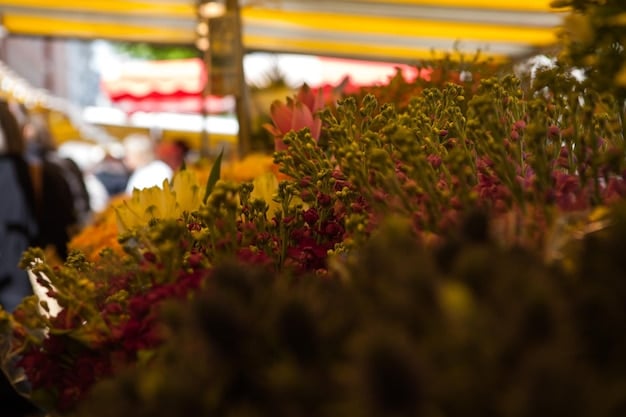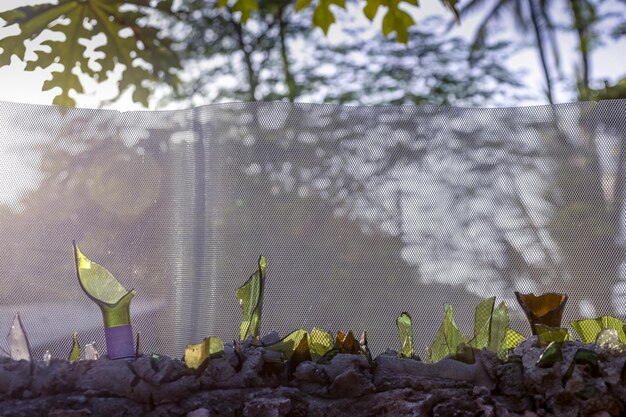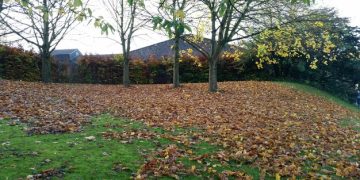Maximize Sunlight: Garden Positioning for Optimal Growth

Maximize Sunlight: How to Properly Position Your Garden for Optimal Growth involves assessing your garden’s sunlight exposure, understanding plant light requirements, and strategically placing plants to ensure they receive adequate sunlight for optimal health and yield.
Are you dreaming of a lush, thriving garden overflowing with vibrant blooms and delicious harvests? The secret to unlocking your garden’s full potential might be simpler than you think: maximize sunlight: how to properly position your garden for optimal growth. Let’s explore how to harness the power of the sun to create a thriving outdoor space.
Understanding Sunlight and Your Garden
Sunlight is the lifeblood of any garden. It provides the energy plants need to perform photosynthesis, the process by which they convert light energy into chemical energy in the form of sugars, fueling their growth and development. Understanding how sunlight interacts with your garden is the first step to optimizing its potential.
Knowing how much sunlight your garden receives throughout the day and how it changes with the seasons is crucial for proper garden planning. Different plants have varying light requirements, so matching the right plants to the appropriate sunny locations is essential for successful gardening.
Assessing Sunlight Exposure
The first step in maximizing sunlight is to accurately assess the amount of sunlight different parts of your garden receive. This can be done through observation and recording sunlight hours throughout the day.
Tracking Sunlight Patterns
Monitor your garden’s sunlight patterns over a period of a few days or even weeks. Note the times when different areas receive direct sunlight, partial shade, or full shade. Pay attention to how these patterns change throughout the day as the sun moves across the sky.
- ☀️ Observe and record sunlight hours in different areas of your garden.
- ⏱️ Track sunlight exposure patterns over several days or weeks.
- 🌳 Consider shadows cast by trees, buildings, and fences.
- 📅 Note seasonal changes in sunlight patterns.
Take into account any obstacles that might cast shadows on your garden, such as trees, buildings, fences, or even neighboring structures. Remember that the angle of the sun changes throughout the year, so shadows will shift accordingly.
By carefully assessing your garden’s sunlight exposure, you can identify the areas that are best suited for different types of plants. This will allow you to strategically position your plants to ensure they receive the optimal amount of sunlight for healthy growth and abundant yields. By understanding the specific light requirements of your plants and matching them to the appropriate locations in your garden, you can set the stage for a flourishing and productive growing season.

Matching Plants to Sunlight Needs
Different plants have different light requirements. Understanding these needs is crucial for a thriving garden. Knowing whether a plant needs full sun, partial shade, or full shade is essential for proper placement and plant health.
Matching the right plants to the available sunlight is key to a successful garden. This will improve plant health, encourage better blooming and fruiting, and minimize stress on your plants.
Understanding Light Requirements
Before you start planting, take the time to research the specific light requirements of each plant you plan to grow. Most seed packets or plant tags will indicate the amount of sunlight a plant needs, typically expressed as “full sun,” “partial shade,” or “full shade.”
Full Sun, Partial Shade, and Full Shade
Plants labeled as “full sun” require at least six hours of direct sunlight per day. “Partial shade” means the plant needs three to six hours of direct sunlight, often preferring morning sun and afternoon shade. “Full shade” plants thrive in less than three hours of direct sunlight per day.
- 🌱 Research light requirements for each plant.
- ☀️ Full sun: at least six hours of direct sunlight daily.
- ⛅ Partial shade: three to six hours of sunlight, often with afternoon shade.
- 🌳 Full shade: less than three hours of direct sunlight daily.
Consider what you want to plant and find the right spots for each. For example, tomatoes and peppers need full sun, while lettuce and spinach can thrive in partial shade. Hostas, ferns, and other shade-loving plants will appreciate a spot in full shade.
Matching plants to their ideal sunlight conditions sets them up for success from the start. By carefully considering the light requirements of each plant, you can create a garden that thrives and provides you with beautiful flowers, fresh vegetables, or lush foliage.
Strategic Plant Placement Techniques
Strategic plant placement isn’t just about putting plants in the ground; it’s about understanding how they’ll interact with the sun, each other, and the environment around them. Effective plant placement can make a significant difference in the health and productivity of your garden.
Optimal placement involves considering the height and spread of plants, the direction of sunlight, and the creation of microclimates within your garden. By carefully arranging your plants, you can maximize light exposure, improve air circulation, and even conserve water.
Height and Sunlight Blocking
When planning your garden layout, consider the mature height of each plant and how it might cast shadows on neighboring plants. Taller plants should generally be placed on the north side of the garden (in the Northern Hemisphere) to avoid blocking sunlight from shorter plants.
Creating a Microclimate
Microclimates are small areas within your garden that have different environmental conditions than the surrounding area. For example, a south-facing wall can create a warm microclimate that is ideal for heat-loving plants, while a shady corner under a tree might be perfect for moisture-loving plants.
- 📏 Consider mature height of plants to avoid shading.
- 🧭 Place taller plants on the north side of the garden.
- 🧱 Use walls and structures to create microclimates.
- 💧 Conserve water by grouping plants with similar needs.
By thoughtfully arranging your plants based on their individual needs and environmental factors, you can create a garden that is not only beautiful but also highly productive. Strategic plant placement is an investment of time and effort that will pay off in the form of healthier plants, higher yields, and a more enjoyable gardening experience.
Using Reflective Surfaces
One innovative method to increase sunlight in your garden is by using reflective surfaces. These surfaces can bounce sunlight onto plants that might otherwise be shaded, boosting their growth potential.
Reflective surfaces are especially useful for gardens in urban environments where buildings or fences can block sunlight. They can also be employed in areas where seasonal changes in sunlight necessitate additional light exposure.
Types of Reflective Materials
Several materials can be used to reflect sunlight onto your plants. Mirrors, white-painted walls, and reflective films are popular options. The key is to use materials that are durable, weather-resistant, and safe for plants.
Placement of Reflective Surfaces
Strategic placement of reflective surfaces is crucial. Position them to capture the maximum amount of sunlight and redirect it toward your plants. Adjust the angle of the surfaces throughout the day to follow the sun’s path.
- ✨ Use mirrors, white-painted walls, or reflective films.
- 📍 Position surfaces to capture and redirect maximum sunlight.
- 🔄 Adjust the angle of surfaces to follow the sun’s path.
- 🌱 Monitor plants closely to avoid overheating.
Care must be taken to ensure that the reflected sunlight doesn’t overheat or burn your plants. Monitor your plants closely, especially during the hottest part of the day, and adjust the angle of the reflective surfaces as needed.
By using reflective surfaces, you can significantly increase the amount of sunlight your plants receive, promoting healthier growth, more abundant blooms, and larger yields. Reflective surfaces are a simple yet effective way to enhance the light environment in your garden and create the optimal conditions for your plants to thrive.

Optimizing Garden Orientation
Garden orientation refers to the direction your garden faces in relation to the sun. Understanding the impact of orientation is crucial for determining which plants receive the most sunlight and how to optimize conditions for different species.
In the Northern Hemisphere, a south-facing garden typically receives the most sunlight throughout the day. East-facing gardens get morning sun, while west-facing gardens receive afternoon sun. North-facing gardens generally get the least direct sunlight.
South-Facing Gardens
South-facing gardens are ideal for plants that require full sun. The long hours of sunlight promote vigorous growth, abundant blooms, and high yields. Vegetables like tomatoes, peppers, and squash thrive in this environment.
East- and West-Facing Gardens
East-facing gardens are perfect for plants that prefer morning sun and afternoon shade. West-facing gardens, on the other hand, can become very hot in the late afternoon, so it’s important to choose plants that can tolerate the heat or provide some shade.
- ☀️ South-facing: maximum sunlight exposure, ideal for full-sun plants.
- 🌅 East-facing: morning sun, suitable for plants preferring partial shade.
- 🌇 West-facing: afternoon sun, requires heat tolerant plants.
- 🌲 North-facing: least direct sunlight, best for shade-loving plants.
If you find that certain areas of your garden are not getting enough sunlight due to orientation, consider using reflective surfaces or relocating plants to sunnier spots. By carefully evaluating your garden’s orientation and making adjustments as needed, you can create the ideal conditions for all your plants to thrive.
Understanding and optimizing garden orientation is a key factor in maximizing sunlight and creating a thriving outdoor space. By considering the direction your garden faces and matching plants to the appropriate light conditions, you can set the stage for a successful growing season and enjoy the rewards of a healthy, productive garden.
Seasonal Adjustments for Sunlight
The amount and angle of sunlight change throughout the year. As such, seasonal adjustments are often necessary to ensure your plants continue to receive optimal sunlight.
Understanding how the position of the sun shifts from season to season and making appropriate changes can help you maintain a thriving garden year-round.
Spring and Summer
During the spring and summer months, the sun is higher in the sky, and daylight hours are longer. Ensure that plants are not shaded by new growth from nearby trees or structures.
Autumn and Winter
In autumn and winter, the sun is lower in the sky, and daylight hours are shorter. Remove any obstacles that might be blocking sunlight, such as fallen leaves or overgrown shrubs. Consider using cold frames or greenhouses to extend the growing season.
- 🌱 Monitor sunlight patterns as seasons change.
- ☀️ Adjust plant positions for optimal light exposure.
- 🍂 Remove obstacles blocking sunlight in fall and winter.
- ❄️ Use cold frames or greenhouses to extend the growing season.
Consider using reflective surfaces to bounce more sunlight onto plants during the darker months. This can help compensate for the reduced daylight hours and keep your plants healthy and productive.
Making seasonal adjustments to your garden is an ongoing process that requires careful observation and adaptation. By staying attuned to the changing sunlight patterns and taking appropriate action, you can ensure that your plants receive the optimal amount of sunlight throughout the year, leading to a thriving and bountiful garden.
| Key Point | Brief Description |
|---|---|
| ☀️ Assessing Sunlight | Track sunlight hours and patterns to identify sunny spots. |
| 🌱 Matching Plants | Choose plants based on their sunlight requirements. |
| 🪞 Reflective Surfaces | Use mirrors to increase sunlight on shaded plants. |
| 🧭 Garden Orientation | Optimize garden orientation for maximum sunlight. |
Frequently Asked Questions
▼
Sunlight is vital; it fuels photosynthesis, providing energy for plants to grow. Insufficient light leads to weak growth, poor blooming, and increased susceptibility to diseases.
▼
“Full sun” means a plant requires at least six hours of direct sunlight per day. Plants needing full sun thrive in locations with unobstructed exposure for much of the day.
▼
Observe your garden throughout the day, noting the hours of direct sunlight in different areas. Use a light meter for more accuracy or track sunlight patterns over a week.
▼
Yes, but monitor closely to avoid overheating or burning. Adjust reflective surfaces as necessary and ensure plants aren’t exposed to intense, direct reflections for too long.
▼
Choose shade-tolerant plants, use reflective surfaces, and consider artificial lighting. Assess and adjust seasonal sunlight patterns. Consider using grow lights as a supplement.
Conclusion
Optimizing sunlight in your garden is essential for plant health and productivity. By assessing your garden’s sunlight patterns, matching plants to their light needs, and employing strategic placement techniques, you can create a thriving outdoor space. Remember to make seasonal adjustments and consider using reflective surfaces to maximize sunlight throughout the year.





